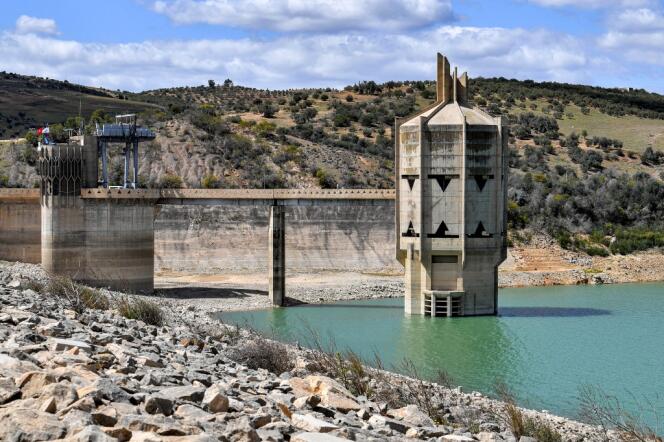
There is no water at night now in Mégrine, a southern suburb of Tunis. Rationing has been going on for weeks, but Chiheb Bin Brahim and his family have come to terms with it. "We got into the habit of putting a bucket in the toilet that I fill in the afternoon, and we each get a
bottle for the night. It's more than enough," said the retired tourism worker, who lives with his wife, children and mother-in-law.
Greater Tunis is not the only region to be impacted by rationing. Responding "to the imbalance between supply and demand (...) because of the shortage of water resources and the persistence of drought for consecutive years," the National Company for the Exploitation and Distribution of Water (Sonede) introduced a widespread system of quotas and cuts on March 31. According to the company, these rationing measures are justified by the low levels – no more than 30% on average – of the country's 30 or so dams.
Located 70 kilometers from Mégrine and Bin Brahim's faucet, the Sidi Salem dam held what used to be the largest reserve of fresh water in Tunisia. This concrete megastructure, built at the start of the 1980s, was constructed on the Medjerda river, which rises in the Algerian Atlas mountains and flows into the Mediterranean north of the Tunisian capital. At the beginning of spring, its level had fallen to a historic low of 16%.
On the banks of the reservoir, the usual deep blue of the water has been replaced by the color of dust. The bowl looks like a bathtub that has been drained. "Do you see the grove up there? The water used to come up to the lower edge of that, and where we are now there was 5 to 6 meters of water. I've never seen anything like it," said Anis Gammar, walking carefully.
'The dilapidated state of the infrastructure'
The 40-year-old farmer and campground manager is watching the weather. In 2022, the country experienced the driest fall since 1950 after one of the hottest summers on record. But "that used to happen and we still had water. It's also a management issue," Gammar commented.
From his family's property downstream, the farmer has a direct view of the dam. "Until a few years ago, it was opened once a day in summer, and they closed it for the winter until March. Then it would start to open again, depending on the water reserves," he recalled. This enabled the authorities to keep the water level high. Then gradually, after the revolution in 2011, the farmer stressed, the authorities began to open the sluices more often: "Twice a day in summer, and sometimes even in winter. These are thousands of cubic meters of water being released each time. It's only logical that there's no more water."
This opinion is shared by Radhia Essamin, a doctor in hydrogeology and a member of the Tunisian Water Observatory, a civil society organization. "There has been a lack of strategic vision for years," the researcher lamented. "There are leaks that no one cares about, and as soon as there is a drought, citizens are the first to be affected by cuts."
In a report published in 2020, the Ministry of Agriculture estimated that nearly 32% of water was lost on the Sonede network and some 40% on irrigation networks due to "the dilapidated state of the infrastructure and [the] lack of maintenance." "This is bad governance and the state must take urgent action," Essamin demanded. The Ministry of Agriculture was contacted several times by Le Monde, but has not responded to requests for interviews.
Dwindling resources
While rationing is currently causing concern in the capital, it is already widespread in several regions of the country. This is "particularly the case in the south and inland regions where outages can last several days," Essamin noted. One of the projects of her organization is an interactive map allowing citizens to report a shutoff, degradation of water quality or a protest related to this resource. In 2022, it collected 2,299 alerts, more than 70% of which were related to water shutoffs.
Originally from the Medenine Governorate, a mountainous and arid territory where water comes mainly from the ground and the sky, Essamin has been observing the dwindling resources and resulting rationing for years. A situation which is all the more painful because "more than 250,000 Tunisians still have no access to water and the majority live in rural areas," she lamented.
But the quotas and cuts decided by the authorities may not have the desired effect. "As soon as there is a drought, citizens are the first to be affected by the cuts, even though 70% of the water is used for irrigation." Essamin points to water-intensive crops such as citrus fruits and tomatoes. "We export our water in the form of agricultural products, but this water must be directed to our food sovereignty. The state urgently needs to publish an agricultural map and show our priorities for irrigation."
Gammar favors species used to water stress – olive trees, pomegranate trees, fig trees... "The majority of crops that we have in this region do not need irrigation in winter," he noted. In the worst case, this farmer will be able to draw water from their wells, an old source that he has cleaned and restored.